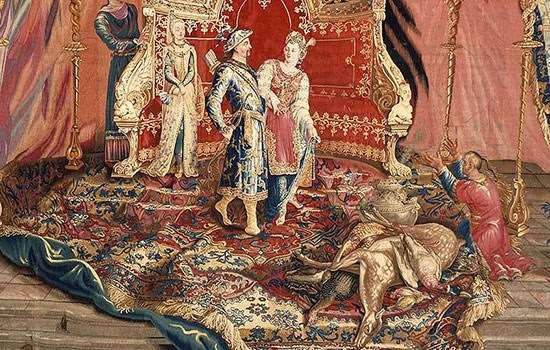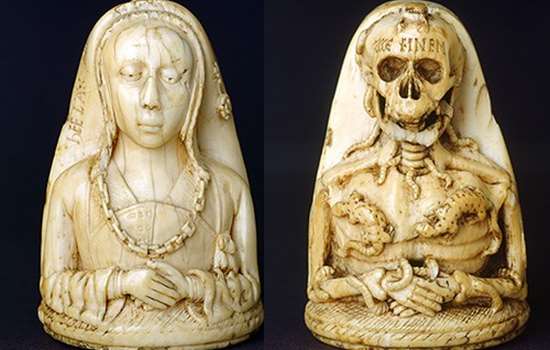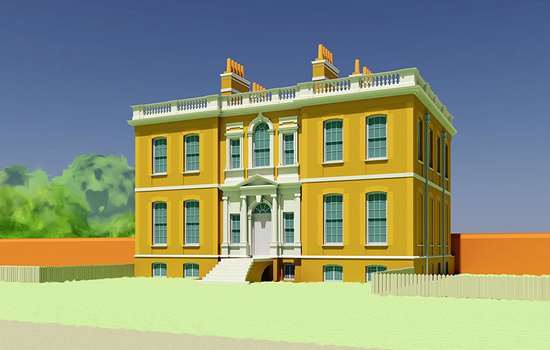The man behind the collection
Wernher was born in Darmstadt, Germany, in 1850. As a young man, he sought his fortune in London, initially working there as a clerk in 1871. Just six weeks into the job he was invited by the Parisian diamond dealer Jules Porgès to accompany him to Kimberley in South Africa to work at the newly discovered diamond mines.
Over the next decade, Wernher overhauled the diamond industry in Kimberley and became incredibly wealthy. He returned to London in 1881, and married his fiancée, Alice Mankiewicz, in 1888. By 1890 he was heading a conglomerate that dominated the international diamond and gold trade.
Wernher’s wealth enabled him to buy many outstanding artworks to fill the rooms of his London home, Bath House on Piccadilly, and his country estate, Luton Hoo in Bedfordshire.
Mining in the Cape
Arriving in South Africa in 1872, Wernher set up business in Kimberley, then a ramshackle encampment of tents and huts built around the network of ‘diggings’. The mines there proved extremely profitable and over time developed into the biggest man-made chasm on earth, known as ‘the Big Hole’.
The diamond industry was built upon the manual labour of Afrian miners, and their working conditions were dangerous. As Wernher himself observed, ‘Daily, men, carts and horses hurtled into the depths, and were dashed to pieces.’
With a head for business, Wernher quickly became an astute diamond trader and successfully developed the company’s mines. He also began to make large profits from mining the gold that was discovered in South Africa in 1884. At the time of his death he was regarded as ‘one of the greatest financial geniuses’ of the time and a generous philanthropist, as well as an important art collector.
A collector’s passion
Wernher developed a keen eye for high-quality craftsmanship during his time grading diamonds in South Africa. On returning to London in 1881, he began collecting art in earnest.
Wernher’s particular passion was for what he called the ‘splendidly ugly’. These were mainly artworks from the medieval and Renaissance periods, which were typically small, unusual in their subject matter and expertly made from richly embellished materials. Many of the ivories, metalwork, wood carvings and enamels on display at Ranger’s bear these characteristics.
You can see one of these extraordinary objects in 3D below. Select the play button, then use your cursor or touch screen to rotate the object and zoom in. For a description and to view more objects in 3D, select the title in the top left of the screen (opens in a new window).
3D models derived photogrammetrically by Jon Bedford of the Geospatial Imaging Team at Historic England on behalf of English Heritage
The rise of the work of art
The original purpose of many of the objects on display at Ranger’s House was to aid worshippers in private prayer, at a time when the Church was the dominant institution in medieval life. Yet there was also a growing appreciation for objects’ artistic and technical qualities, and their ability to demonstrate an owner’s taste and status.
This idea was refined during the Renaissance in Europe in the 15th and early 16th centuries, when beautifully crafted objects came to be valued as works of art in their own right.
The world through art
More than 700 works of art from Wernher’s varied collection are now on display at Ranger’s House. Not only are many unique examples of their kind, but together their individual stories reveal much about the making, meaning and movement of art objects on a world stage.
Over the course of many centuries, the material culture of Europe was profoundly shaped by ever-expanding sea routes. Designs, techniques and materials were imported from across Africa and Asia and were readily employed by European artists in their own art objects. These influences can be seen in artworks across the collection.
More broadly, the collection encapsulates universal human concerns and experiences such as love and death, storytelling and devotion, and beauty and identity.
The Wernher Collection and Ranger’s House
English Heritage acquired Ranger’s House in 1986, long after its own historic collections had been dispersed. Just over a decade later, the opportunity arose to work with the Wernher Foundation to save a large part of Julius Wernher’s outstanding art collection from being sold and potentially transferred abroad. As Ranger’s had no collection of its own and the Wernher Collection no home, it made sense to display these exceptional artworks here on long-term loan.
Although Wernher never lived at or visited Ranger’s House himself, photographs showing how he displayed the collection in his London and Bedfordshire houses have informed how we present it today, across ten elegant rooms.
Unique in both its quality and breadth, the Wernher Collection is one of the greatest private collections of art ever assembled in Europe.
Find out more
-

Highlights of the Wernher Collection
Explore a selection of works from the Wernher Collection and discover what they reveal about how the material culture of Europe was changed and shaped over hundreds of years.
-

Explore in 3D
View some of the works of art that Wernher collected in 3D, including two extraordinary objects that were designed as memento mori – reminders of death.
-

History of Ranger’s House
Built in the 1720s for a naval captain, Ranger’s House was later home to politicians, military officers and royals, including the Rangers of Greenwich Park, for 180 years. Discover its 300-year history.
